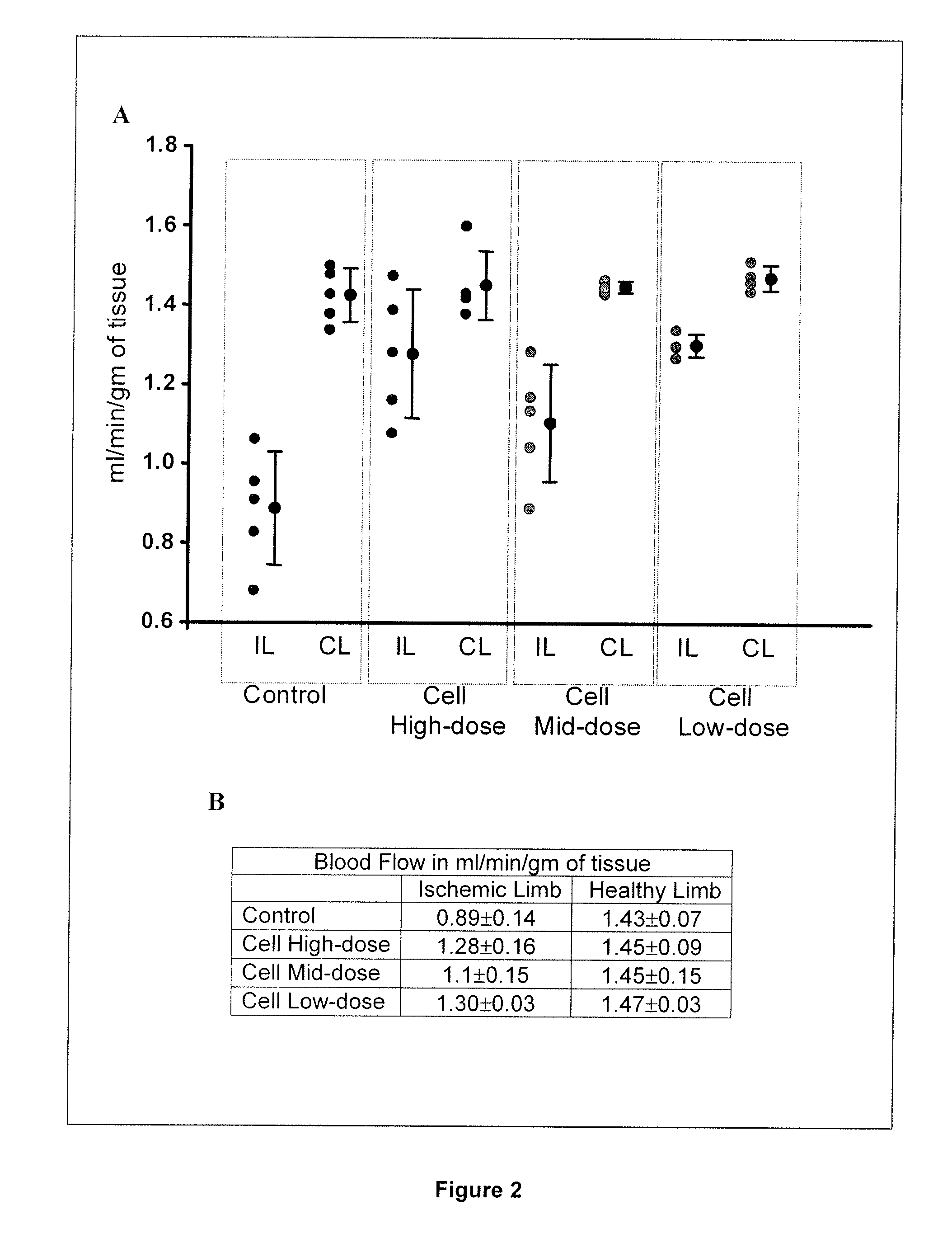Treatment of limb ischemia
a technology for limb ischemia and cell therapy, applied in the direction of genetically modified cells, drug compositions, metabolic disorders, etc., can solve the problems of affecting so as to improve the function of the body, increase the capillary density, and improve the effect of blood flow
- Summary
- Abstract
- Description
- Claims
- Application Information
AI Technical Summary
Benefits of technology
Problems solved by technology
Method used
Image
Examples
Embodiment Construction
[0042]The present invention is based on the surprising discovery that an alternative somatic stem cell type to cells of bone marrow and mesenchymal origin, namely neural stem cells, provide a scalable, safe and very potent allogenic treatment for peripheral arterial disease.
[0043]Neural stem cells (NSCs) can be derived from the ventricular and hippocampal regions of the fetal and adult brain and can be isolated by sorting brain cells using specific cell surface markers (Uchida et al., 2000) and expanded in defined media with additional growth factors (Reynolds and Weiss, 1992; Carpenter et al., 1999; Vescovi et al., 1999). NSCs can also be generated from pluripotent cells directly, such as embryonic stem cells (Conti et al. 2005). Although such cells are suitable, the capacity for expansion of NSCs is limited to a relatively small number of cell passages, necessitating additional technologies to permit a scalable, standardised, stable and, therefore, commercial application. The cell...
PUM
| Property | Measurement | Unit |
|---|---|---|
| Temperature | aaaaa | aaaaa |
| Therapeutic | aaaaa | aaaaa |
Abstract
Description
Claims
Application Information
 Login to View More
Login to View More - R&D
- Intellectual Property
- Life Sciences
- Materials
- Tech Scout
- Unparalleled Data Quality
- Higher Quality Content
- 60% Fewer Hallucinations
Browse by: Latest US Patents, China's latest patents, Technical Efficacy Thesaurus, Application Domain, Technology Topic, Popular Technical Reports.
© 2025 PatSnap. All rights reserved.Legal|Privacy policy|Modern Slavery Act Transparency Statement|Sitemap|About US| Contact US: help@patsnap.com



